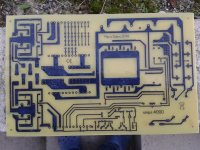I really like to see you working around such project, if you look carefully for the correct circuits you need, your road to success will be short.
If you are still interested into this project, and still want it to become real, I can offer some help in the PFC stage, but I may not be able help in the regulated SMPS section, that's going to be somehow challenging task, but its not impossible.
I don't know if you have access to the parts needed, inductors, Mosfets, IGBTS, PFC controllers etc...
Again, I really like to see such project to become reality. And I will help you as much as I can.
Good luck
Hi MicroSIM,
Much obliged for your response. Be great if you can take the PFC component in your strides, and I'll work on the rest. If anyone's interested in joining in, then of course the invitation is open.
Re: inductors and other components, my company has accounts with Arrow, Mouser and DigiKEY, so can source them relatively easily. If we hit an obstacle, I can always go direct to the manufacturers through existing contacts.
So .. here's the next instalment: theoretical waveforms and calculations.
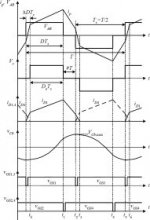
For those up-tight folks, these graphs correspond to the assumptions list made earlier in the post; for completeness, the analysis will assume the following for the sake of simplifying the maths:
- The transformer has the magnetising inductance Lm and a leakage inductance Lr that can be ignored, because it is very small compared with Lm. The turn ratio of the transformer is n
- Switches are ideal components except for its output capacitor and internal diode
- Output voltage Vo is constant
The modal derivation divides time interval T into four intervals: Powering (1), Freewheeling, Regeneration, Powering (2). We shall refer to these as Mode 1 - Mode 4.
The equivalent circuits for these modes, which maps to the above waveforms, are as follows:
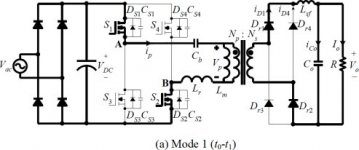
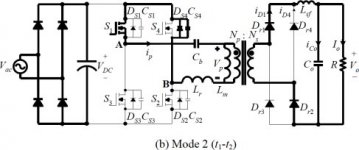
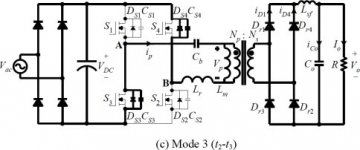
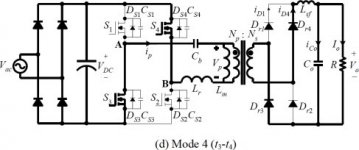
The mathematical derivation for each is as follows:
- Mode 1 (t0 - t1): This is the first powering interval, which starts at time t=t0. Power is transferred from the primary to the secondary windings through switches S1 and S2, which are are turned on at ZVS. At this point, secondary bridge rectifier diodes Dr1 and Dr2 are turned on, while diodes Dr3 and Dr4 are turned off. Output voltage Vois is reflected to the primary and the primary, hence current ip charges the blocking capacitor Cb. Thus, the blocking capacitor voltage vCb increases nonlinearly. The average voltage of vCbis negative during this mode. As a result, bridge voltage VAB is increases. The primary current ip and the blocking capacitor voltage vCb are expressed as follows:
(got to go to work .. rest to come  )
)







